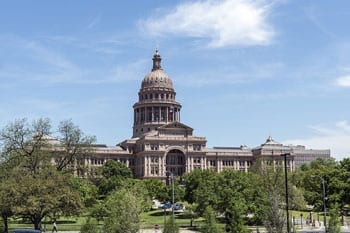Advantages of Using Invoice Factoring
Businesses use Austin factoring companies to speed up their cash flow from slow-paying customers. The process of invoice factoring works by selling your receivables (or invoices) to a factoring company. The factoring company pays you an advance of your invoice within 24 hours. Once your customer pays, the remaining balance is deposited into your account, minus a small fee for the service.
Monthly Financing Programs from $50K-$20MM
While there are many Austin factoring companies and financing options, Scale Funding is your number-one choice. We offer quick, 15-minute approvals, fast setup, same-day funding, and other back-office support services which include dedicated account representatives, credit department, and accounts receivable management.
 Get started today in three easy steps:
Get started today in three easy steps:
- Submit your contact information on the form or call 800-707-4845 to get a free quote.
- Once you’re approved in as little as 15 minutes, submit your invoices to Scale Funding.
- Get cash on your invoices within 24 hours.
Custom Funding Programs
Companies utilize our Austin invoice factoring programs for a variety of reasons. No matter what the reason is, they all need access to quick cash.
| Slow-Paying Customers | One of the most common reasons companies use our Austin accounts receivable financing programs is to avoid waiting for customer payment. Instead of waiting 30 days or more, our programs pay you same day on your invoices. |
| Growth | Companies that are quickly growing utilize our invoice factoring programs to get working capital to keep up with their company’s growing demands. |
| Start-Ups | It can be difficult for startups to have enough cash to accept new contracts when most of their money is invested in starting their business. Our invoice factoring programs allow them to accept more contracts with the assurance that they’ll have the cash to complete the job. |
| Credit | Whether your credit is maxed or less-than-perfect, we can work with you. Our funding solution looks at your customers’ credit rather than yours. |
| Bank Turn-Downs & Workouts | When the risk is too high for a bank, remember that Scale Funding can help. |
| Bankruptcy | Our accounts receivable financing programs are a perfect solution to companies looking for a debtor-in-possession financing program. We’ll help you take back control of your business finances. |
Industries
Our custom invoice factoring and accounts receivable financing programs can work for a variety of industries. Scale Funding has more than 20 years of experience in:
- Oilfield Services
- Telecom & Wireless
- Trucking & Freight
- Heavy Construction
- Utility & Pipeline
- Technology
- Renewable Energy
- Government Contractors
- Staffing Agencies
- Many More
Austin
 What is there to do in Austin? If you ask that to an Austinite, you might get a puzzled expression. In Zilker Metropolitan Park alone, you can hike, bike, paddle the canoe, ride a miniature train, visit a botanical garden, and watch a live musical performance. Those are just six activities, and that is just one site among so many. How can a person ever be bored in this city? It’s Austin, Texas, y’all!
What is there to do in Austin? If you ask that to an Austinite, you might get a puzzled expression. In Zilker Metropolitan Park alone, you can hike, bike, paddle the canoe, ride a miniature train, visit a botanical garden, and watch a live musical performance. Those are just six activities, and that is just one site among so many. How can a person ever be bored in this city? It’s Austin, Texas, y’all!
Austin is the capital of Texas. It is named after Stephen Fuller Austin, the founding father of Texas. Its population is more than 930,000 which ranks it as the eleventh most populated city in the United States.
History
As early as 9200 BC, the Austin area has already been inhabited by humans in their early evolutionary stage. When European settlers explored the Texan soil, it was populated by Native Americans called the Tonkawa tribe. In the eighteenth century, Spanish colonists ventured here. In the nineteenth century, the capital of Texas was moved from Houston to Austin. In the same century, Texas was an independent republic but was later annexed to the U.S. government in 1845. After the Civil War, business was positively swinging in Texas’ favor. Austin became a trading center for both cotton and cattle, two essential commodities at this point of the nation’s economic history.
The first public schools were opened in September 1881. The University of Texas at Austin was opened in 1883.
In the 1920s and the 1930s, there were a lot of beautification projects that included the polishing of the public parks and the creation of better infrastructure. During the Great Depression, an amazing thing happened. The population grew more than 60 percent, and enrollment at the University of Texas doubled. With the establishment of Lower Colorado River Authority, dams were created along the Colorado River. These dams were much improved later in the 1940s which protected the land from floods.
In the middle of the twentieth century, Austin was already considered a major metropolitan city. In the 1970s, local artists like Willie Nelson placed Austin as a place where music thrives. It proclaims itself as the Live Music Capital of the world for sound reasons. Music greats have passed by Austin and performed their music here to the delight of both the locals and tourists.
 Geography and Climate
Geography and Climate
Austin is located in Central Texas along the Colorado River. Aside from the Colorado River, the city is also the proud home to a number of other rivers, lakes, and waterways that include Lady Bird Lake, Lake Travis, and Barton Springs. Its land area is 264.9 square kilometers. The winters are short, but the summers are hot and long. It is safe to say that it is usually sunny in Austin.
Economy
Austin is called the Silicon Hills for its prominence in new technology. High tech has provided its people with jobs since the dot-com boom in the late 1990s. Apple, PayPal, Electronic Arts, IBM, and Google have operations in the city. Facebook made it a point to establish an office in Austin to hire at least 200 employees. The computer science and engineering graduates of the University of Texas at Austin continuously provide the tech companies with able workers and staff. If these graduates are not absorbed by the private companies, they are hired by units of the federal government such as in the area of defense.
Prestigious publications like Forbes have named Austin as one of the ideal places for career development and business opportunity.
Organic Food Culture
The conscientious foodie should know Whole Food Market, Inc. by now, whose headquarters are in Austin. This well-known international supermarket chain sells only organic food. Not only are the items devoid of hydrogenated fat, preservatives, and artificial sweeteners, the meat parts they serve are only those that came from livestock that didn’t experience animal cruelty. Its success is not just an economic success but an environmental story as well.
Austin itself is teeming with restaurants that are for people with certain culinary specifications. Vegan diners and gluten-free restos are easy to find in the city. Places like Capital City Bakery and Casa de Luz serve tasty and organic food.
Arts and Culture
Austin has more music venues than any other city in the US. It has two well- attended festivals, South by Southwest and Austin City Limits, a three-day affair that has been televised. Famous names like The Allman Brothers, Ray Charles, Joan Baez, Pat Metheny, and Elvis Costello are just some of the musical greats that have graced the latter. Its televised program is the longest running in U.S. television history.
Moviemakers troop to Austin to make movies. A magazine cited the city as a wonderful place for filmmaking. Some of the movies that were shot here were Dazed and Confused, The Faculty, Miss Congeniality, and School of Rock. This is possible because of the diversity of its topography and its cityscape that a movie team can easily choose the ideal location it wants. Also, proficient film craftsmen abound with graduates from the Radio-Television-Film Department of the University of Texas at Austin. Former airport hangars were turned into the now-busy Austin Studios. SXSW Film Festival and the Austin Film Festival are annual affairs attended by cineastes all over. Ain’t It Cool News, the popular movie blog owned by Harry Knowles, has its headquarters in Austin, too.
Dance and theatre are also well represented by various groups (Ballet East Dance Company, Tapestry Dance Company) and performance venues (Zachary Scott Theater Center, The Victory Grill, Long Center for the Performing Arts).
Tourist Attractions
The Austin Zoo in Travis County is not just where people go to see cute animals, but it is actually a sanctuary for creatures that were neglected or abandoned.
The Ann W. Richards Congress Bridge attracts not just commuters. People go there to see a huge number of bats emerge from inside the bridge. An estimate of 1.5 million bats reside in the bridge, a record of sorts.
The Enchanted Forest in South Austin is not only a sprawling area for different sorts of fauna and flora, but also for musical artists as well as this has been a venue for musical acts and live performances.
 The Texas State Capitol is where Texas leaders hold their office. It also attracts tourists because of statues like the Goddess of Liberty who is standing atop the building and the architectural details like the building’s dome and grand staircase.
The Texas State Capitol is where Texas leaders hold their office. It also attracts tourists because of statues like the Goddess of Liberty who is standing atop the building and the architectural details like the building’s dome and grand staircase.
The Barton Springs Pool is a popular swimming venue, with its waters coming from natural spring. Its waters are said to have cleansing abilities and former Native Americans who were the early inhabitants of Austin bathed for that reason.
Art and artifact lovers are sure to experience historic satisfaction in the many museums of the city, including the Texas Memorial Museum and the Blanton Museum of Art.
The Darryl K Royal-Texas Memorial Stadium boasts of 101,000 seats, accommodating an impressive number of football fans, including those who root for the Texas Longhorns.
Famous Austinites
Sandra Bullock (actor), Kanye West (musician), Billy Bob Thornton (actor), Richard Linklater (film director), Dan Rather (journalist), and Andy Roddick (tennis champion) are celebrities that have lived (and some are still living and working) in Austin. Gathering all their trophies together is enough to fill another museum.
Austin is indeed spectacular. To quote another famous Austinite, film director Robert Rodriguez, “People don’t live in Austin to work. They work to live there.”
COMMON QUESTIONS
